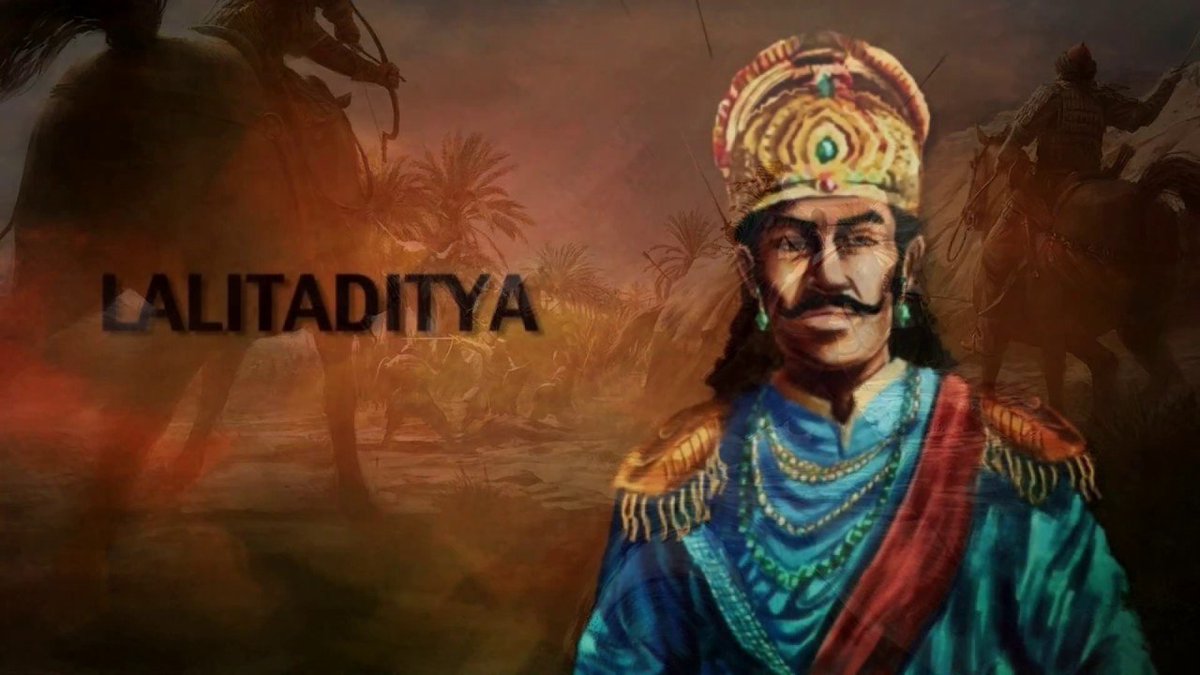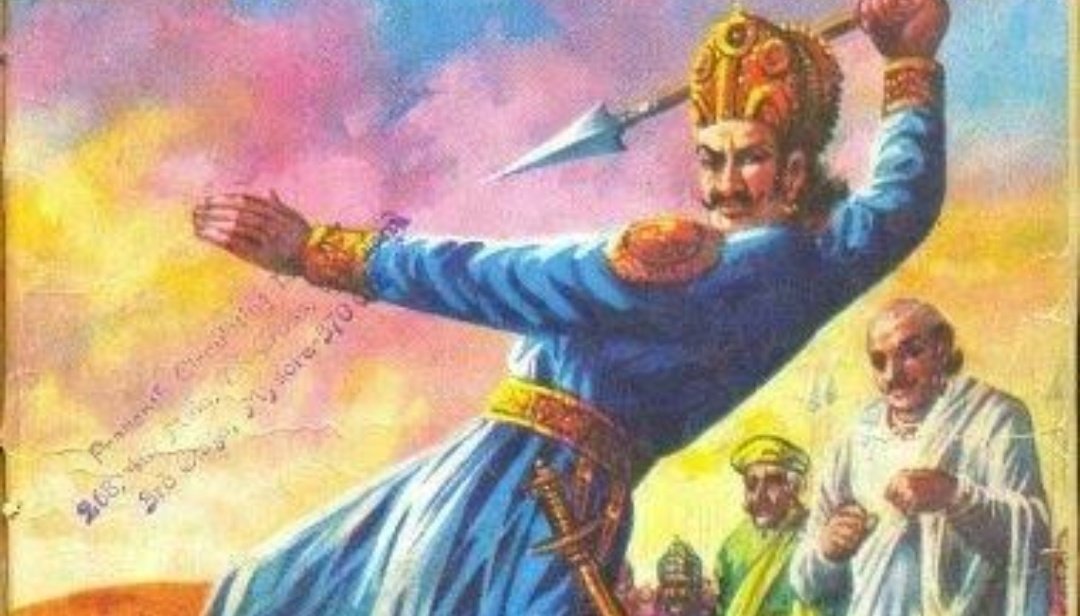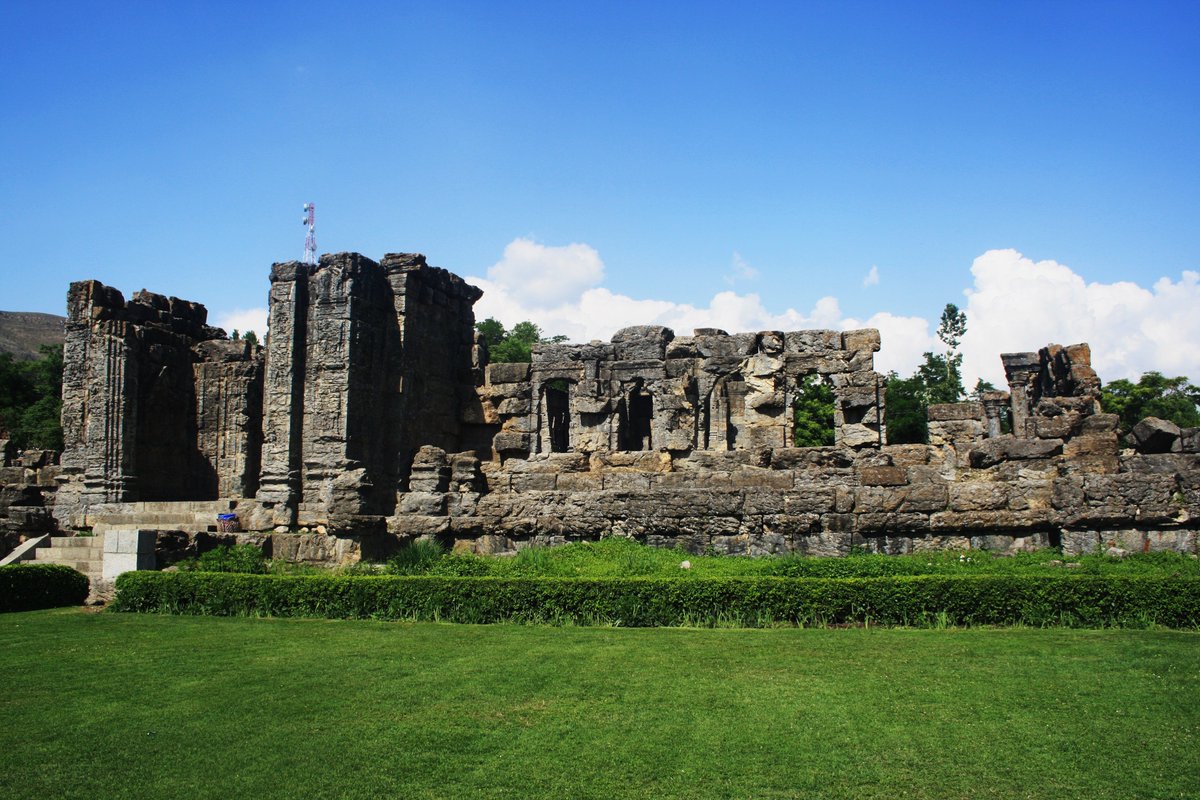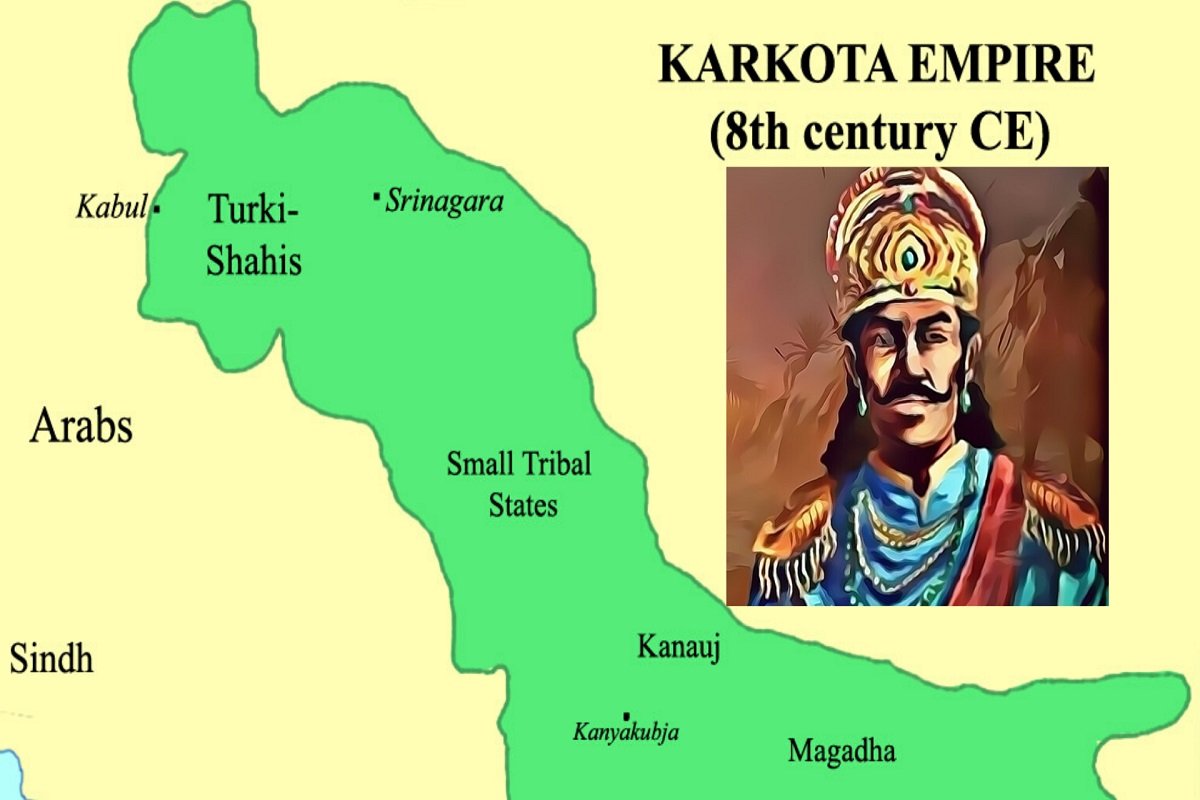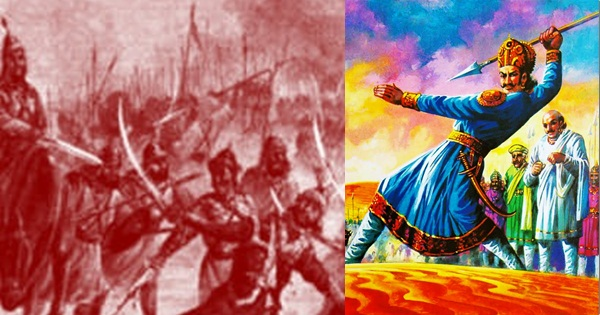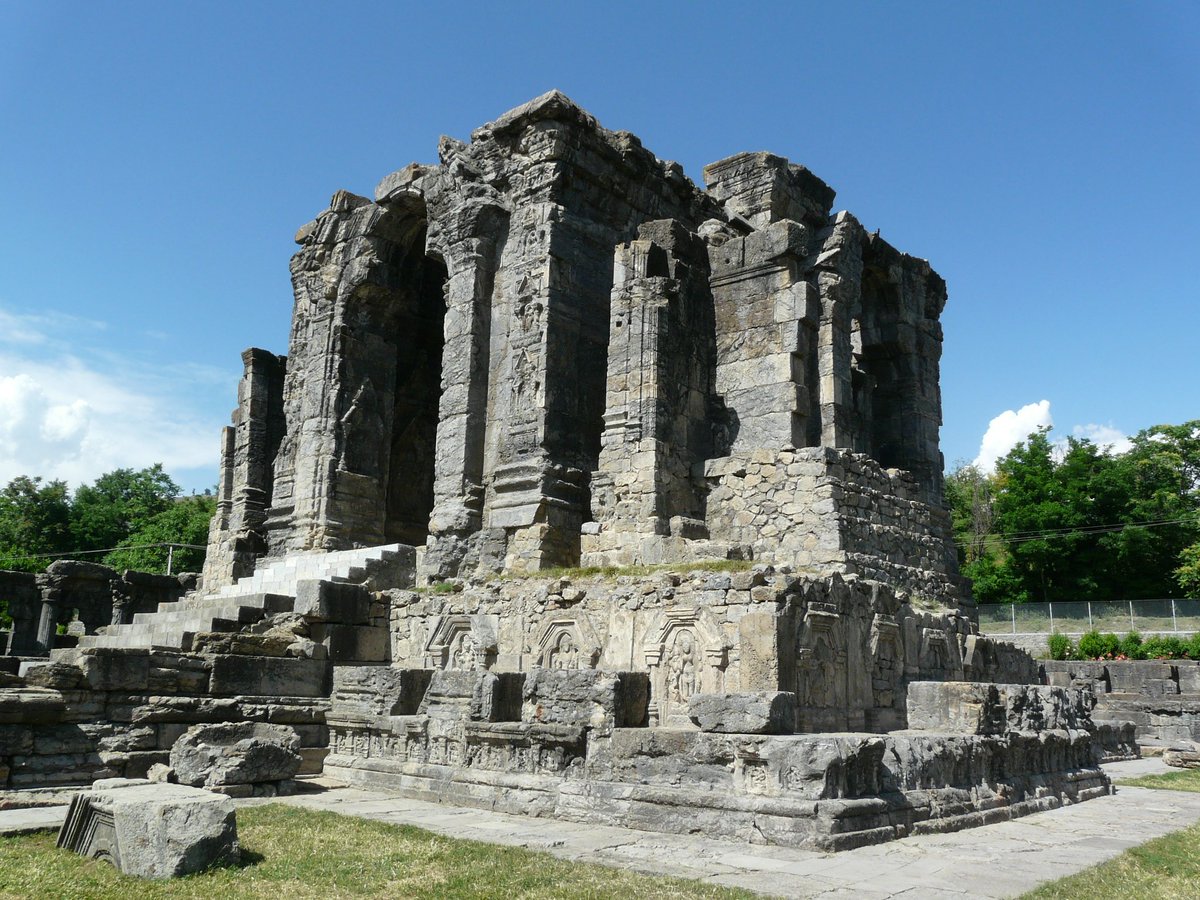Thread on "ALEXENDER OF KASHMIR :LALITADITYA MUKHOPIDHA"
Lalitaditya was the youngest son of the Karkota king Durlabhaka and queen Narendraprabha. He had two elder brothers named Chandrapida and Tarapida ,who preceded him as the rulers of Kashmir.
Lalitaditya was the youngest son of the Karkota king Durlabhaka and queen Narendraprabha. He had two elder brothers named Chandrapida and Tarapida ,who preceded him as the rulers of Kashmir.
In the beginning of the 8th century, the Arab invasion had started knocking at the door of the Kabul valley.
Simultaneously after the end of Tang reign in China, many Central Asian states that had come under the Chinese rule had disintegrated because of civil wars.
Simultaneously after the end of Tang reign in China, many Central Asian states that had come under the Chinese rule had disintegrated because of civil wars.
During this period, the Muslim power in Sindh was trying to march towards the north. While the empires of Kabul and Gandhar were occupied by these invasions, Lalitaditya used the opportunity to establish his foothold in the north.
He expressed interest in other areas besides his military campaign. Art and trade gained importance during his reign, religious festivals were held, and special facilities as well as encouragement were provided to support painters and sculptors.
Lalitaditya Muktapida moved his capital from Srinagar to Parihaspur (a small town near Srinagar in Kashmir Valley).
Lalitaditya according to Kalhana built his residence and four temples in this area.
Lalitaditya according to Kalhana built his residence and four temples in this area.
His first enterprise was directed against Yasovarman, the ruler of Kanauj. After the defeat of Yasovarman, the King supposingly had triumphantly marched round whole of India, from Bengal and Orissa in the east to Kathiawar and Kambojas (Afghanistan) in the west.
After Yasovarman, Lalitaditya is supposed to have invaded and subdued Tukharas, a nation in the northern region. The country of Tukharas is the Tokharistan of the Muslim period comprising Badakhshan. It is also stated that there were S’ahi princes in the court of Lalitaditya.
Turkish prince Cankuna was in the court of Lalitaditya. Alberuni also mentions that Kashmiris of his time used to celebrate annually on a certain day a festival to commemorate the victory which their King Muktapida had won over Turks.
Next in the list of conquests come the Bhauttas or the Tibetans. The Annals of Tang dynasty of China know Lalitaditya-Muktapida under the name of Mu-to-pi, as the King of Kashmir who sent an embassy to the Chinese court during the reign of Emperor Hiuen-tsung (AD 713-755).
Lalitaditya had also subdued Kashmir’s immediate northern neighbours, the Dards. The Dard tribes have from very early times to the present day inhabited the mountain territories immediately adjoining Kashmir to the north and north-west.
Lalitaditya had been a builder of renown. The ruins of the splendid Sun Temple of Martanda are still the most striking object of ancient Hindu architecture in the Valley. The location of the Temple itself is very prominent.
The plateau where Lalitaditya built his capital is now known as Parspor Udar. It rises south-east of Shadipur between the marshes of Panznor and Hartrath. There are ruins of numerous temples, vihara, and other structures here.
The greatest Buddhist gift of the King was a great Vihara at Parihaspura with a colossal Buddha image which still existed in Kalhana’s time. There was another Vihara at Huskapura where Ou-kong stayed on his arrival in Kashmir.
Lalitaditya’s death is also surrounded in mystery. There are many theories about his death but all point towards the fact that it occurred during his expedition in the northern region. he perished “through excessive snow in a country called Aryanka”.
It is also a belief that Bappa Rawal took help of Kashmir’s army when he reached Ghazni and defeated Salim. Lalitaditya, Bappa Rawal, Nagbhatt of Ujjain and Chalukya of Gujarat fought against the Invading Arab forces at the same time in different places.
He tasted victory everywhere he went.
“For rivers which have set out from their own region, the ocean is the limit, but nowhere is there a limit for those who are frankly aspiring to be conquerors.”-kalhana
“For rivers which have set out from their own region, the ocean is the limit, but nowhere is there a limit for those who are frankly aspiring to be conquerors.”-kalhana

 Read on Twitter
Read on Twitter